- Conditions for Long and Abundant Flowering of Violets
- 1. Light
- 2. Temperature
- 3. Watering and Potting Mix
- Proper Lighting
- Natural Light
- Artificial Lighting
- Light Intensity
- Light Duration
- Monitoring and Adjusting
- Adequate Watering
- Correct Temperature and Humidity
- 1. Temperature
- 2. Humidity
- How to Make Senpolias Bloom for a Long Time
- 1. Adequate Lighting
- 2. Optimal Temperature
- 3. Proper Watering and Humidity
- Provide Regular Fertilization
- 1. Choose the right fertilizer
- 2. Schedule regular feedings
- 3. Follow proper application techniques
- 4. Monitor for signs of nutrient deficiency or excess
- Ensure Good Air Circulation
- Remove Faded Flowers and Leaves
- Avoid Overwatering
- Q&A:
- What are the three conditions for long and abundant flowering of violets?
- How can I provide proper lighting for my violets?
- What is the correct way to water violets?
- What is the recommended temperature for violets?
- What are some additional tips for promoting long and abundant flowering of violets?
- Why is proper lighting important for violets?
- What are the consequences of overwatering violets?
- Video: How to care for African Violets after blooming
Violets, or senpolias, are beautiful and delicate plants that can bring a touch of color and grace to any garden or indoor space. To enjoy their stunning blooms for as long as possible, it’s important to provide them with the right conditions. By following these three essential guidelines, you can ensure your violets will flourish and bloom abundantly for an extended period of time.
1. Proper Lighting: Violets thrive in bright, indirect light. They should be placed near a window with filtered sunlight, ensuring they receive about 12-14 hours of light per day. Avoid exposing them to direct sunlight, as this can lead to leaf burn. If your violets are not receiving enough light, they may become leggy and fail to produce flowers. Consider using a grow light to supplement their lighting needs.
2. Adequate Watering: Violets need a consistent level of moisture to thrive. It’s crucial to water them regularly, keeping the soil evenly moist but not soggy. Allow the top inch of soil to dry out before watering again. Avoid using cold water directly from the tap, as it can shock the delicate root system. Instead, opt for room temperature water or use rainwater that has had time to warm up.
3. Proper Humidity: Violets prefer a humid environment, which can be challenging to achieve indoors. To increase the humidity around your plants, place them on a tray filled with water and pebbles or use a humidifier. Mist the leaves occasionally with room temperature water to mimic their natural tropical habitat. Be mindful of any drafts or dry air from heating or cooling systems, as these can cause the leaves to dry out.
By providing violets with the right lighting, adequate watering, and proper humidity, you can create the ideal conditions for long and abundant flowering. With care and attention, your senpolias will reward you with their stunning blooms and add a touch of beauty to your home or garden.
Conditions for Long and Abundant Flowering of Violets
Violets, also known as senpolias or Saintpaulias, are popular indoor plants prized for their beautiful flowers. To ensure that your violets bloom for a long time and produce an abundance of flowers, there are three important conditions to consider:
1. Light
Violets need bright, indirect light to thrive and bloom. Place your violets in a location where they will receive plenty of bright, filtered light throughout the day. Avoid placing them in direct sunlight, as this can cause their leaves to burn.
If you don’t have a suitable location with enough natural light, you can supplement with artificial grow lights. LED grow lights are a good option, as they provide the right spectrum of light for optimal growth and flowering.
2. Temperature
Violets prefer moderate temperatures between 65°F and 75°F (18°C and 24°C). Avoid placing them in areas with extreme temperature fluctuations or near drafts, as this can hinder their blooming process.
During the winter months, when indoor heating can dry out the air, it’s beneficial to provide extra humidity for your violets. You can do this by placing a tray of water near the plants or by using a humidifier.
3. Watering and Potting Mix
Proper watering is crucial for the flowering of violets. They prefer to be kept evenly moist but not waterlogged. Water your violets when the top inch of soil feels dry to the touch. Be sure to use room temperature water to avoid shocking the roots.
When it comes to the potting mix, violets prefer a well-draining mixture that retains some moisture. A mixture of peat moss, perlite, and vermiculite is a good choice. Avoid using heavy potting soils or those that retain too much water, as this can lead to root rot.
To encourage more blooming, you can also fertilize your violets regularly during the growing season. Use a balanced, water-soluble fertilizer specifically formulated for violets, following the instructions on the package for proper dilution and application.
| Condition | Requirements |
|---|---|
| Light | Bright, indirect light |
| Temperature | Moderate temperatures, avoid drafts |
| Watering | Keep evenly moist, but not waterlogged |
| Potting Mix | Well-draining mixture that retains some moisture |
| Fertilizing | Regular fertilization with a balanced, water-soluble fertilizer |
Proper Lighting
Proper lighting is essential for the long and abundant flowering of violets. These delicate plants require the right amount and type of light to thrive. Here are a few factors to consider when providing proper lighting for your violets:
Natural Light
Violets prefer bright, indirect light. They should not be placed in direct sunlight as it can scorch their leaves and flowers. East or west-facing windowsills are ideal, as they provide gentle morning or afternoon sunlight. If you don’t have access to natural light, you can use artificial lighting to supplement the needs of your violets.
Artificial Lighting
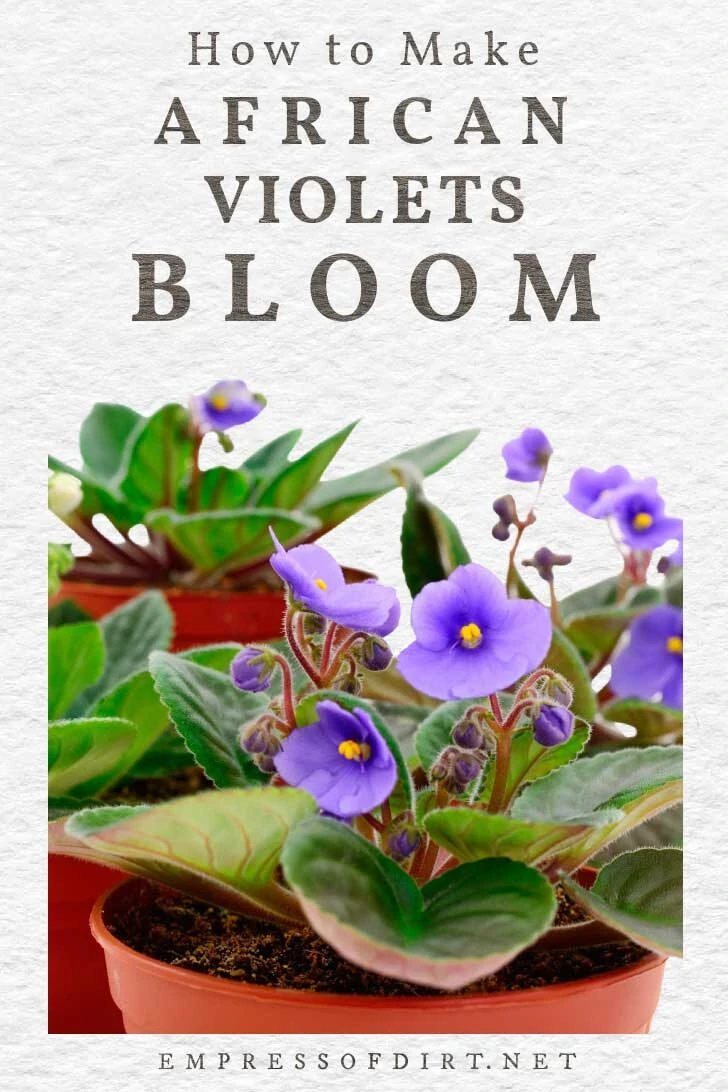
If natural light is insufficient or unavailable, you can use artificial lighting to ensure your violets receive the necessary light. LED grow lights are highly recommended for violets as they provide a full spectrum of light and are energy-efficient. Place the lights about 6-12 inches above the plants and keep them on for 12-14 hours a day, replicating the natural daylight cycle.
Light Intensity
While violets require bright light, it’s important to avoid excessive intensity. Harsh, direct light can cause leaf burn and hinder flowering. Use sheer curtains or a mesh screen to diffuse intense sunlight if necessary. Aim for a light intensity of around 4000-6000 lux for optimum growth and flowering of violets.
Light Duration
Violets need a consistent light cycle to flower profusely. They require 12-14 hours of light per day. To mimic natural daylight, it’s best to provide light during the day and darkness at night. Use a timer to automate the lighting schedule and ensure consistent light duration for your violets.
Monitoring and Adjusting
Regularly monitor your violets’ response to the lighting conditions provided. If you notice stretching or elongation of the stems, it may indicate insufficient light. Conversely, if the leaves start to turn pale or develop yellow spots, it could be a sign of too much light. Adjust the distance and duration of artificial lights or change their location near natural light sources accordingly to provide the optimal lighting conditions for your violets.
By providing proper lighting, both natural and artificial, you can help your violets thrive and bloom abundantly for an extended period.
Adequate Watering
Proper watering is crucial for the long and abundant flowering of violets. Senpolias have specific water requirements that need to be met in order to keep them healthy and blooming. Here are some tips on how to water your violets adequately:
- Keep the soil moist: Violets prefer to have consistently moist soil, but not excessively wet. The soil should never be allowed to dry out completely as this can lead to wilting and poor flowering. Water the plants regularly, making sure to soak the root area without waterlogging the pot.
- Avoid overwatering: While violets like moist soil, it’s important not to overwater them. Too much water can cause root rot and other problems. Make sure to allow the top layer of soil to dry slightly between waterings to prevent waterlogged conditions.
- Use proper watering techniques: Avoid watering the leaves of the violets as this can increase the risk of fungal diseases. Instead, direct the water towards the base of the plant, aiming to wet the soil evenly. It’s also beneficial to water with a gentle hand, allowing the soil to absorb the water gradually.
- Consider the temperature and humidity: The temperature and humidity levels in your environment can affect the watering needs of your violets. During hot and dry periods, you may need to water more frequently to compensate for increased evaporation. On the other hand, in cooler and more humid conditions, you may need to decrease the frequency of watering.
By following these watering guidelines, you can ensure that your violets receive the right amount of water to thrive and produce beautiful, long-lasting blooms.
Correct Temperature and Humidity
Temperature and humidity greatly affect the blooming process of violets. Here are the key factors to consider:
1. Temperature
Violets prefer a cool and stable temperature for optimal blooming. The ideal temperature range for violets is between 15°C to 20°C (59°F to 68°F). Extreme temperatures can cause stress to the plants resulting in reduced flowering. Avoid placing violets near drafty areas, heaters, or direct sunlight, as these can disrupt the temperature balance.
2. Humidity
Violets thrive in a humid environment. The ideal humidity level for violets is between 40% to 60%. Dry air can lead to dehydrated plants and inhibit flower production. To increase humidity, you can use a humidifier, place the violets on a tray filled with water and pebbles, or mist them regularly with water. It’s important to note that excessive humidity can also cause problems, such as mold or rot, so maintaining a balanced humidity level is crucial.
By maintaining the correct temperature and humidity levels, you can create an optimal environment for violets to bloom abundantly and for a longer period of time.
How to Make Senpolias Bloom for a Long Time
Senpolias, or violets, are beautiful and delicate flowers that can bring a touch of color to any home or garden. To ensure that your senpolias bloom for a long time, there are three key conditions that need to be met:
1. Adequate Lighting
Senpolias require moderate to bright indirect light to thrive and bloom. Placing them near a window that receives filtered light is ideal. Avoid exposing them to direct sunlight, as it can scorch their leaves and flowers.
2. Optimal Temperature
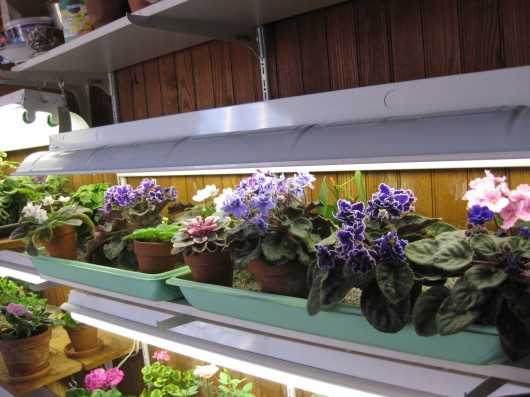
Senpolias prefer cooler temperatures ranging from 15 to 20°C (59 to 68°F). They can tolerate slightly higher temperatures during the day, but it’s important to avoid extreme heat or fluctuations in temperature. Keep them away from drafts and air conditioning vents.
3. Proper Watering and Humidity
Senpolias like to be kept evenly moist, but not overly wet. Water them thoroughly when the top inch of soil feels dry to the touch, and allow any excess water to drain away. Avoid getting water on the leaves or crown of the plant, as it can cause rot.
Keeping the humidity levels around 50-60% can also promote healthy blooming. You can achieve this by placing a tray of water near the plants or using a humidifier.
Following these three conditions will help keep your senpolias healthy and encourage long-lasting blooming. Remember to fertilize them regularly with a balanced fertilizer specifically designed for violets. With proper care, your senpolias will reward you with beautiful flowers for months to come.
Provide Regular Fertilization
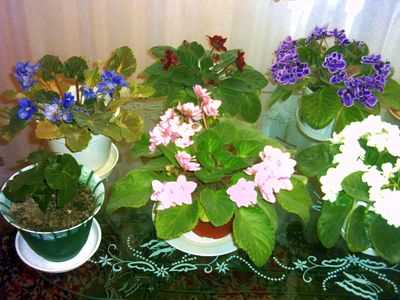
Fertilization is an essential aspect of caring for violets and ensuring they bloom for a long time. Fertilizers provide the necessary nutrients that promote healthy growth and abundant flowering. Here are some tips to help you provide regular fertilization for your violets:
1. Choose the right fertilizer
There are various types of fertilizers available for violets, including liquid and granular formulations. Look for a fertilizer specifically designed for flowering plants or African violets. These fertilizers typically contain high levels of phosphorus, which promotes flower production. It is important to follow the instructions on the fertilizer packaging for proper application.
2. Schedule regular feedings
Establish a regular feeding schedule for your violets. Most violets benefit from weekly or biweekly feedings during the active growing season. However, it is important to adjust the frequency and strength of the fertilizer based on the specific needs of your violets. Pay attention to the growth rate and overall health of the plants to determine if adjustments are necessary.
3. Follow proper application techniques
When fertilizing violets, it is crucial to follow proper application techniques to avoid damaging the plants. Water the violets thoroughly before applying the fertilizer to ensure proper absorption. Use a diluted fertilizer solution at half the recommended strength to avoid overfeeding. Apply the fertilizer evenly around the base of the plant, taking care not to get it on the leaves or flowers. After fertilizing, water the plants again to help distribute the nutrients.
4. Monitor for signs of nutrient deficiency or excess
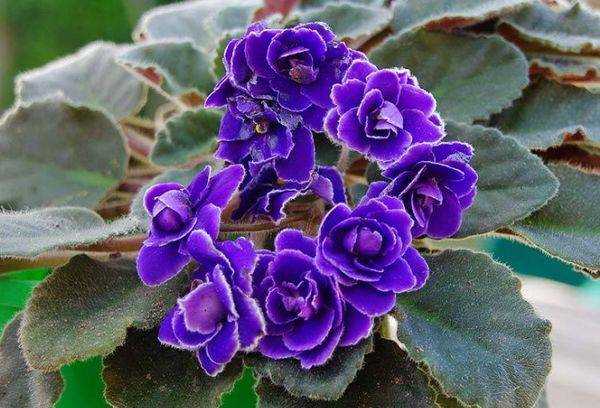
Regular fertilization helps prevent nutrient deficiencies in violets. However, it is important to monitor the plants for any signs of nutrient deficiency or excess. Yellowing leaves, stunted growth, or weak flowering can indicate a lack of nutrients, while browning leaf tips or leaf burn can indicate fertilizer burn. Adjust the fertilization schedule or strength accordingly to maintain a healthy balance.
By providing regular fertilization, you can ensure that your violets receive the nutrients they need to produce a long and abundant flowering display. Remember to choose the right fertilizer, establish a feeding schedule, follow proper application techniques, and monitor the plants for any nutrient-related issues. With proper care, your violets will flourish and provide you with beautiful blooms for a long time.
Ensure Good Air Circulation
Providing good air circulation is essential for the long and abundant flowering of violets. Proper air circulation helps prevent the build-up of humidity, which can lead to the development of diseases such as mold and mildew. It also ensures that carbon dioxide is distributed evenly around the plants, allowing for better photosynthesis and nutrient absorption.
To ensure good air circulation for your violets, follow these tips:
- Place your violets in a well-ventilated area. Avoid placing them in a corner or against a wall, as this can restrict airflow.
- Use a fan to enhance air movement if necessary. This is especially important if you grow violets in a greenhouse or an enclosed space.
- Avoid overcrowding your violets. Give each plant enough space to grow and spread its foliage without hindering airflow.
- Regularly open windows or use vents to allow fresh air to enter the room where your violets are located.
Additionally, keep in mind that certain environmental conditions, such as high humidity or a lack of air movement, can increase the risk of pests and diseases. By ensuring good air circulation, you can create a healthier growing environment for your violets, promoting their long and abundant flowering.
Remove Faded Flowers and Leaves
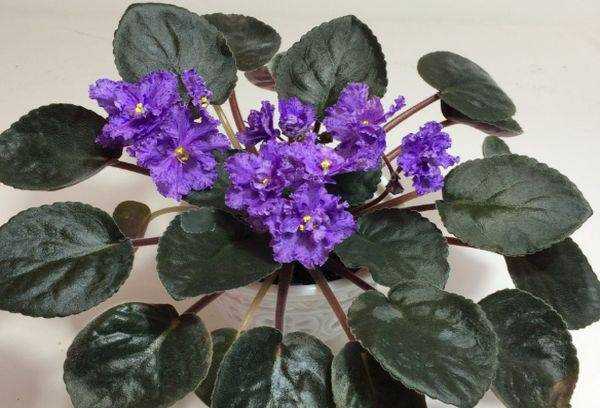
Regular deadheading is a crucial step in maintaining the long and abundant flowering of violets, also known as senpolias. Removing faded flowers and leaves not only keeps the plant looking neat and attractive but also encourages new growth and prolonged blooming. Here are some reasons why removing faded flowers and leaves is essential:
- Promotes Continued Blooming: By removing faded flowers, you allow the plant to redirect energy towards producing new flowers instead of wasting it on seed development.
- Prevents Pest and Disease Issues: Faded flowers and leaves can become a breeding ground for pests and diseases. Removing them promptly reduces the risk of infestations and infections, keeping your violets healthy.
- Improves Aesthetic Appeal: Regularly removing faded flowers and leaves helps maintain the overall beauty and presentation of your violets. It ensures that the focus remains on the vibrant and healthy blooms.
To effectively remove faded flowers and leaves:
- Inspect the Plant: Examine your violets regularly to identify any faded flowers or yellowing leaves that need removal.
- Pinch or Snip: Gently pinch or use pruning shears to remove faded flowers at the base where they meet the stem. For yellowing or dead leaves, carefully cut them off at the base of the stem.
- Dispose of Debris: Collect the removed flowers and leaves and dispose of them properly to prevent any potential pest or disease spread.
Remember, removing faded flowers and leaves should be done throughout the blooming season to help your violets thrive and continue producing beautiful blooms. Regular care and attention ensure that your senpolias stay healthy and vibrant for an extended period.
Avoid Overwatering
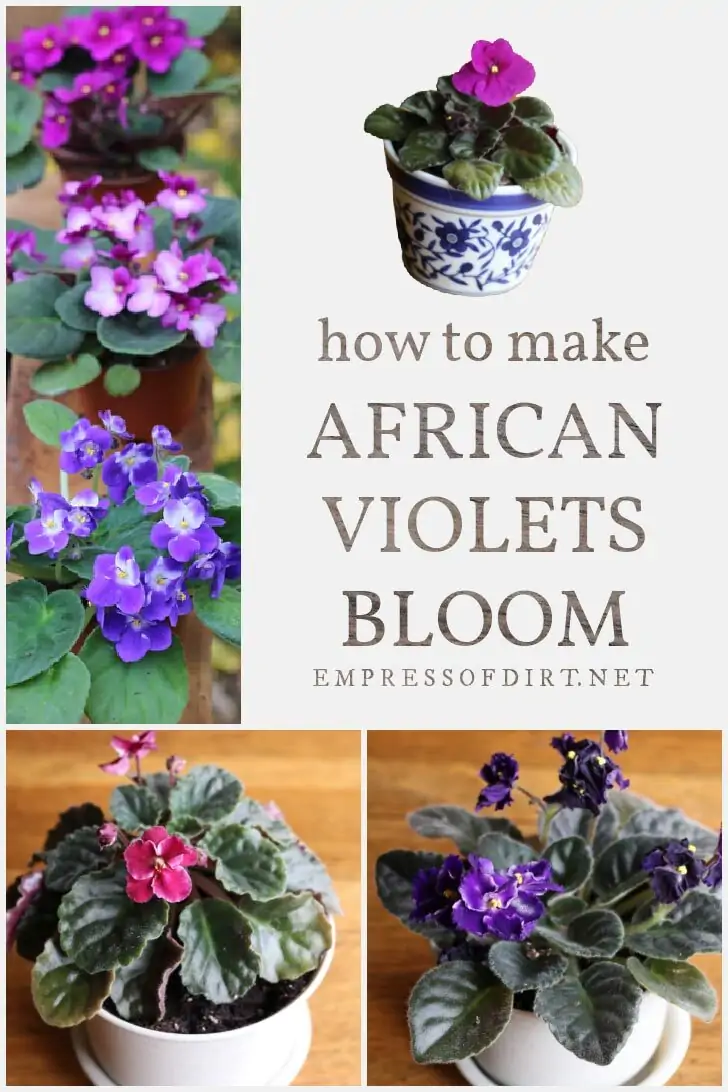
One of the most common mistakes made when caring for violets is overwatering. Too much water can lead to root rot and other issues that can negatively affect the flowering of your violets. It is important to find the right balance of watering, ensuring that the soil is moist but not overly saturated.
Here are some tips to help you avoid overwatering your violets:
- Use well-draining soil: Violets prefer soil that is well-draining to prevent water from pooling around the roots. You can purchase potting mix specifically formulated for African violets, or you can make your own mix using a combination of peat moss, vermiculite, and perlite.
- Water from the bottom: Instead of watering from the top, which can lead to overwatering and cause water to sit on the leaves, try watering violets from the bottom. Place the pot in a tray filled with water and allow the plant to absorb the water through the drainage holes. Remove the pot from the tray after about 15-20 minutes to avoid oversaturation.
- Monitor the moisture level: Stick your finger about an inch into the soil to check the moisture level. If it feels dry, it’s time to water. If it still feels moist, wait a little longer before watering. Be mindful not to let the soil completely dry out, as this can also stress the plant.
- Adjust watering frequency: The frequency of watering can vary depending on factors such as temperature, humidity, and the size of the pot. Generally, violets should be watered about once a week, but you may need to adjust this based on the conditions in your home.
- Provide proper drainage: Ensure that your violet’s pot has drainage holes to allow excess water to escape. If your pot does not have drainage holes, consider repotting it into a container that does or use a saucer underneath to catch excess water.
By avoiding overwatering, you can help promote healthy growth and long-lasting blooming of your violets.
Q&A:
What are the three conditions for long and abundant flowering of violets?
The three conditions for long and abundant flowering of violets are proper lighting, correct watering, and appropriate temperature.
How can I provide proper lighting for my violets?
You can provide proper lighting for your violets by placing them in a bright location, but away from direct sunlight. They thrive in bright, indirect light.
What is the correct way to water violets?
The correct way to water violets is to water them thoroughly whenever the top inch of soil feels dry to the touch. It is important to avoid overwatering and ensure proper drainage.
What is the recommended temperature for violets?
The recommended temperature for violets is around 18-24 degrees Celsius during the day and slightly cooler at night. They prefer a moderate and consistent temperature.
What are some additional tips for promoting long and abundant flowering of violets?
Some additional tips for promoting long and abundant flowering of violets include regularly fertilizing with a balanced fertilizer, providing good air circulation, and removing faded or wilted flowers to encourage new blooms.
Why is proper lighting important for violets?
Proper lighting is important for violets because it directly affects their growth and flowering. Without enough light, they may become leggy, produce fewer flowers, or fail to bloom altogether.
What are the consequences of overwatering violets?
Overwatering violets can lead to root rot, which can be fatal for the plants. It can also cause leaves to yellow or become mushy. It is important to maintain a proper balance of watering to prevent such issues.
Video:
How to care for African Violets after blooming







